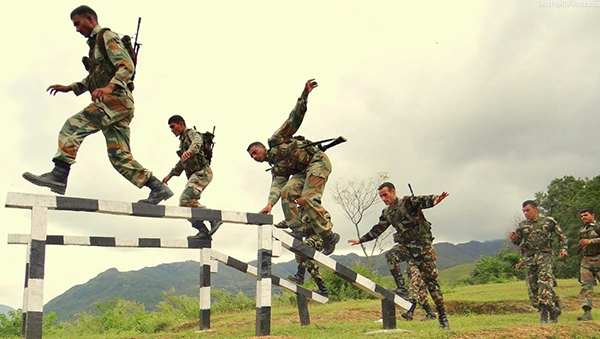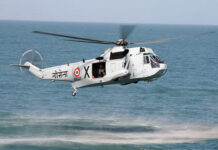Making Up Shortages Through Short-Term Schemes
The Indian Army is considering a radical new proposal to take in officers for just three years of service, a kind of new tenure for the existing Short Service Commission (SSC) scheme. At present, the Army recruits people under SSC for an initial tenure of 10 years with an option of doing four more years of service. The new format called “Tour of Duty (ToD)” will run as per the existing parameters of recruitment. There will be no change in training schedule, training period or relaxations, including age for recruitment. The proposed three-year tenure will form part of the existing strength of officers’ cadre. In the long run, since these officers will go out with a golden handshake, there will be reduction in the pension bill.
Financial Implications
A ToD officer will earn Rs 80,000-90,000 per month, while a simple graduate in the civilian sector probably earns just about Rs 30,000-50,000 in the beginning. If an officer is commissioned at an age less than 22, he is out of the Army at the age of 25 and ready for a second career outside. The Army believes the well-trained, disciplined youngsters “exiting” the force after one-year of training and three years of ToD at an age of 26/27, with a good amount of money in their pockets but no pension and other benefits, will be lapped up by the private and public sectors for a fruitful second career.
The ToD scheme would entail “voluntary military service” to mark a far-reaching shift away from the existing “permanent service” in the armed forces. The ToD scheme, if and when approved, will initially be launched with around 100 vacancies for officers and 1,000 for jawans.
The Army currently has around 43,000 officers, with almost 80% of them in the permanent commission (PC) cadre, and 11.8 lakh other ranks. The minimum service tenure for a short-service commission (SSC) officer is 10 years but 50-60% of them are also granted PC to serve till at least 54 years of age and thereafter get pension.
The cumulative approximate cost of pre-commission training, salary and other expenses is nearly Rs 5.12 crore and Rs 6.83 crore on an officer if he or she is released after 10 and 14 years respectively. However, similar cost for those released after three years would be just Rs 80 lakh to Rs 85 lakh each. Since, approximately 50 per cent to 60 per cent of the SSC officers are granted permanent commission, the cost of their retention till attaining 54 years of age is too high. Similarly, money saved on cost incurred by the government for a sepoy with 17 years of service as compared with a ToD sepoy with three years of service for a 17-year period would be substantial. The savings for only 1,000 jawans could be Rs 11,000 crore which could then be utilised for the much needed modernisation of the Indian armed forces.
The Army study says there has been a “staggering 146% increase” in defence pensions during the last five years, which is increasingly proving unsustainable. The salary and pension bill of the 14-lakh armed forces and 4-lakh defence civilians, along with the 31-lakh pensioners, amounts to 56% of the overall annual defence budget, leaving very little for military modernization after day-to-day operating costs.
Industry Support
The scheme has elicited a positive response from some industrialists. Voices are already being heard from the corporate leaders that the virtues supposedly acquired by the ToD officers and men will make them a preferable candidate over a non-ToD candidate.
Some have said that they could consider hiring candidates first and then let them do the military internship “as it will help us groom our work force in ethos of the army.” Another said the ToD exposure would give young people an “added advantage” in their next workplace.
Young Blood
There is an abiding feeling in the force that the best quality and calibre of youth from top colleges, universities, IITs, IIMs etc, normally give the Army career a pass in favour of the corporate world.
Reasons given are pay, quality of life, risk, long years of commitment against the dream of climbing the corporate ladder through multiple hops, job-to-job maintaining the pace of upward mobility with no long-term commitments.
In a demography where half of the 1.34 billion are below 25 years, this is a huge loss to the force. The Army, therefore, intends to offer a no-pains package that addresses all the above.
Making SSC Attractive
As part of measures to reduce the mounting pension burden of the Army, efforts are on to make the Short Service Commission (SSC) more attractive, according to Chief of the Defence Staff (CDS) Gen Bipin Rawat.
He said a year’s professional or technical courses such as MBA or M.Tech while exiting after 14 years, other courses and options were being considered. Other incentives include a lumpsum amount and medical facilities under the Ex-servicemen Contributory Health Scheme (ECHS).
Gen Rawat said about 25-30% of the SSC officers would be granted PC so that they are kept motivated.
Alternative Ways
The Army has time-tested procedures for recruitment of Other Ranks (OR), in certain cases Junior Commissioned Officers (JCOs) as Religious Teachers and the Army Education Corps and Officers through NDA, IMA and OTA. The training period varies from forty-four weeks for men to four years for an officer passing out from IMA through NDA.
The route of the Territorial Army is an option for this recruitment, which is a support to the combat units in guarding of vulnerable areas/points thus releasing troops for their primary tasks.
Another under explored potential is that of National Cadets Corps (NCC). These students of schools and colleges are imparted some basic military training, and NCC, is, arguably, the largest uniformed youth volunteers in the world. NCC cadets can be given due incentives to join tour of duty, and that thought process is on the cards.
In a similar manner, Territorial Army (TA) is another concept that can plug into the Tour of Duty. TA gives us flexibility to engage soldiers and officers for the army in field as diverse as ecology to high technology. Their flexible terms of service need to be exploited.
Another relevant endeavour in the past has been to find lateral absorption in the Central Armed Police Forces (CAPFs) for our soldiers and officers who retire early.
Inverse Induction
Since this proposal did not find any takers, Army is contemplating inverse induction from CAPFs. It envisages that the CAPFs may recruit soldier or officer as per their procedures and loan them to the Army for training and operational experience for seven years, after which they would revert to their respective services. This could be a win-win situation, where CAPFs would get well-trained, experienced and seasoned soldiers, and Army gets a support cadre, and yet not have pensionary liabilities.
The Inverse Induction model will not only save on defence pensions, but will also help in training personnel better.
Their tenure in the armed forces will provide the CAPFs with trained, battle-hardened personnel. They can also be recruited by other understaffed departments like Home Guards, Civil Defence Corps, the National Disaster Response Force (NDRF), and other security agencies.
The Army has a long standing deficiency of some 7000+ officers and 27,000+ men. It was felt that if ToD entries could become a success, a part of these deficiencies could be addressed at minimal costs.
Criticism
The Army already have a number of entries besides National Defence Academy (NDA), Indian Military Academy (IMA), Officers Training Academy (OTA), Army Cadet College (ACC) and Technical Entry (TE). Over years, it has also added Regimental Commission Officers (RCO), Special Commission Officers (SCO), General Entry (GE), National Cadet Corps (NCC), Territorial Army (TA), Women Special Entry (WSE) and Special List (SL) entries. They create disparities and are complicated for human resources managers. There is not enough consideration being given to long term impact on the fundamentals of development of soldiers and officers.
Tour on duty scheme needs to be evaluated deeply before adopting. Else it will weaken the cutting edge by harboring in group feeling amongst the regulars and the ToDs with distinct epicentres. The tendency will be to develop mistrust that will spell disaster during stress situations that the armed forces are meant to tackle as their primary duty.



















[…] READ ALSO HUMAN RESOURCES: 3-Year ‘Tour of Duty’ Under Consideration […]